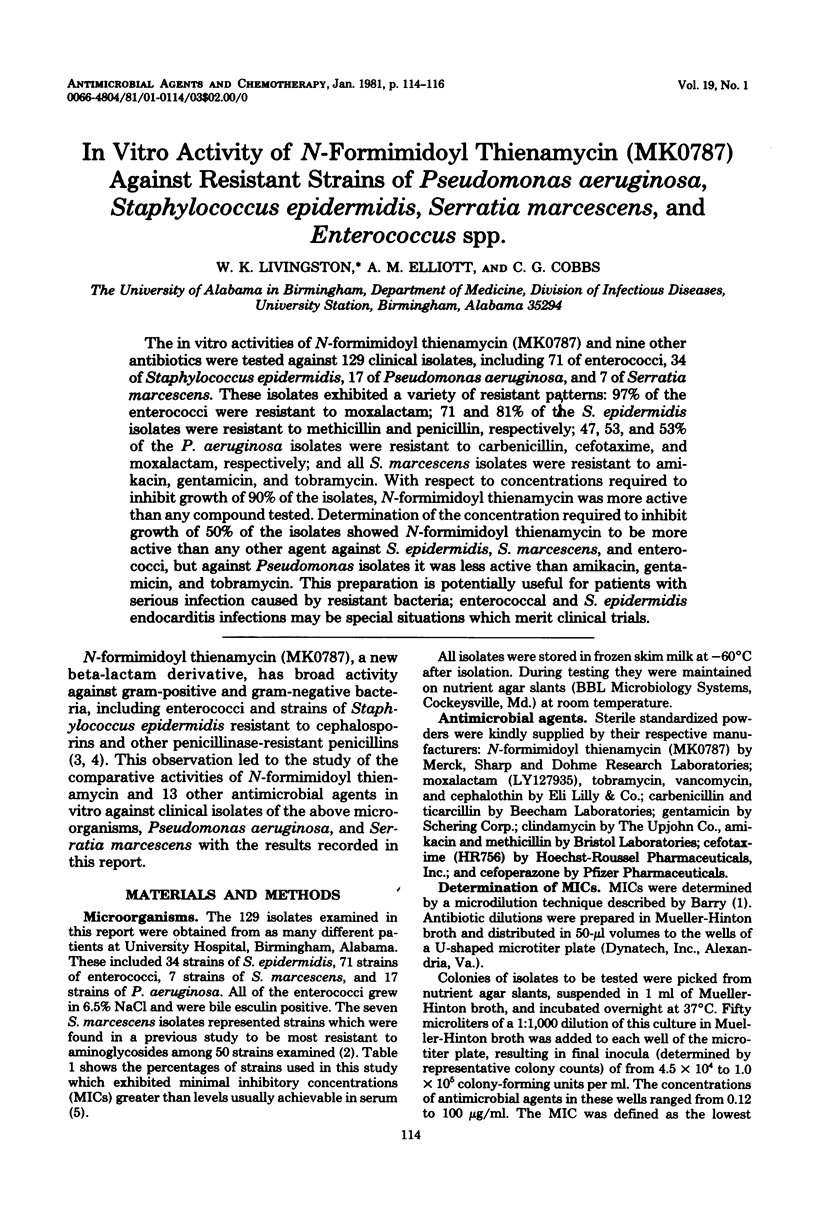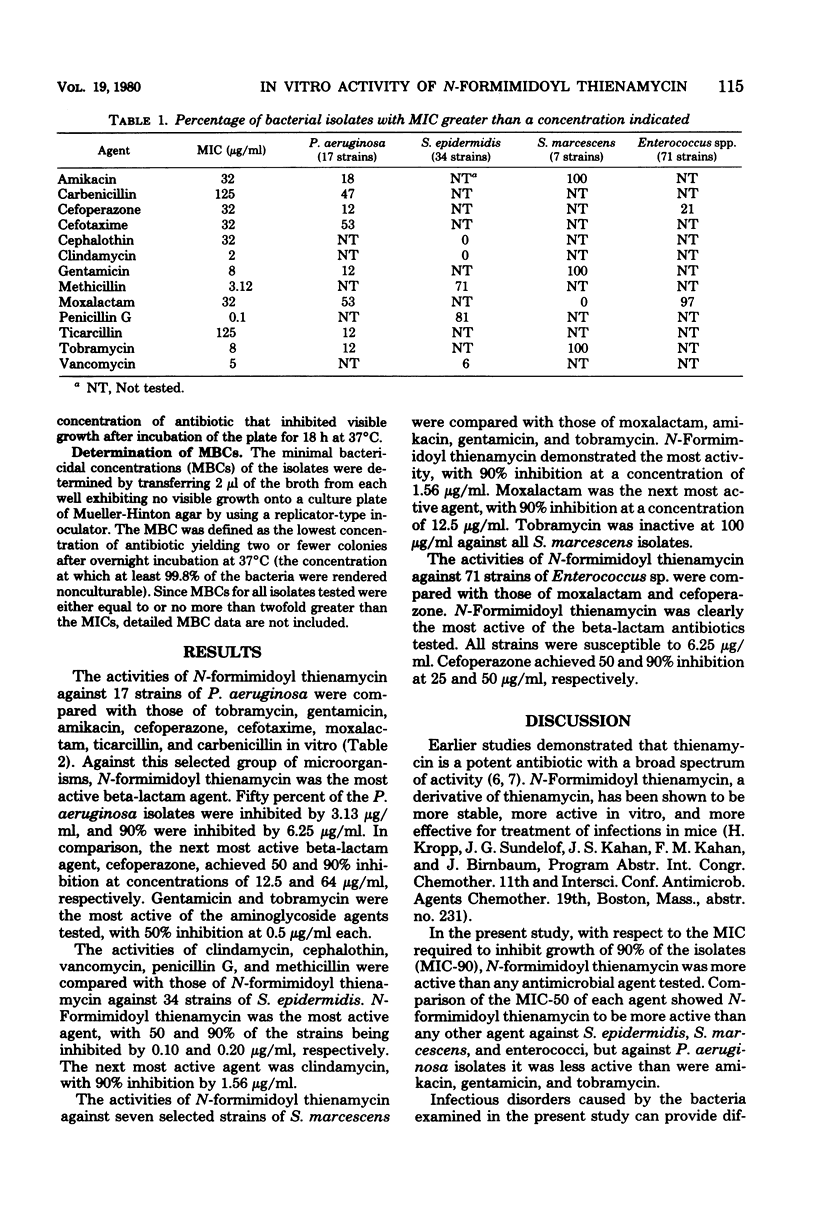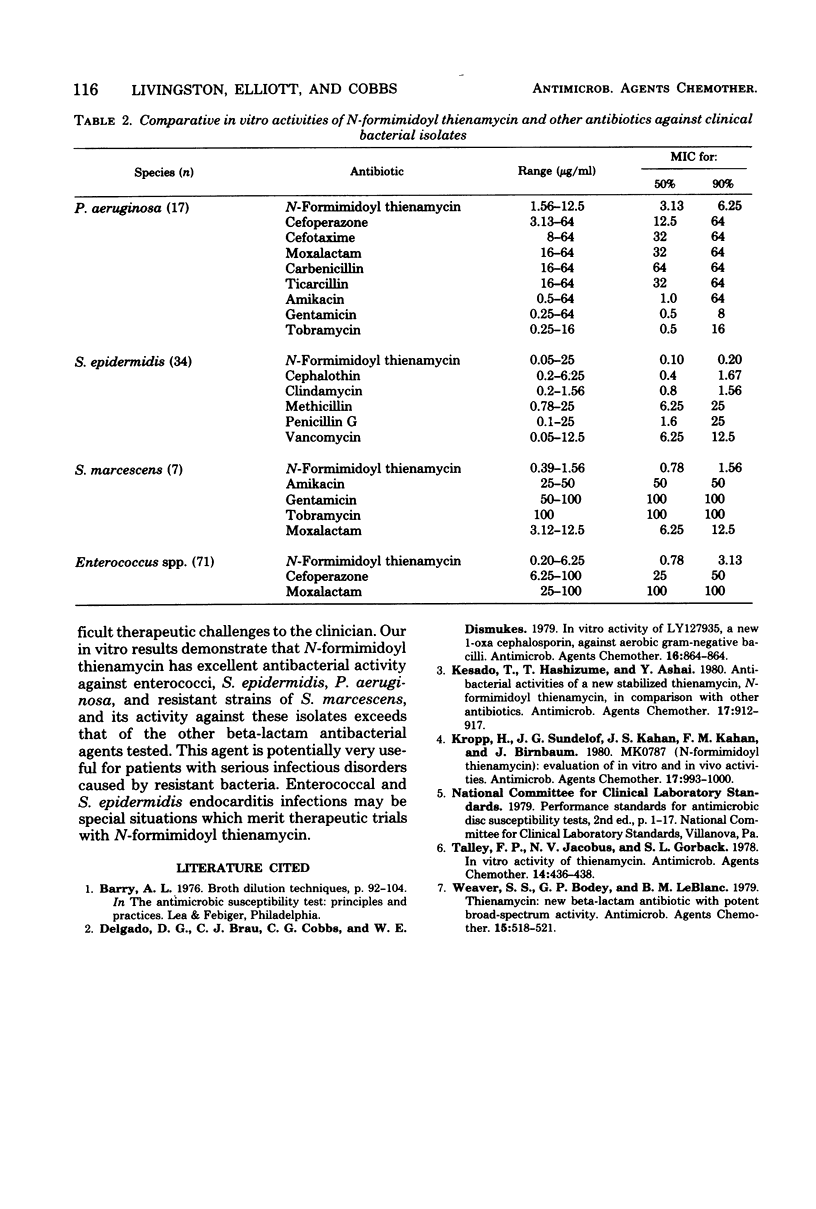Abstract
The in vitro activities of N-formimidoyl thienamycin (MK0787) and nine other antibiotics were tested against 129 clinical isolates, including 71 of enterococci, 34 of Staphylococcus epidermidis, 17 of Pseudomonas aeruginosa, and 7 of Serratia marcescens. These isolates exhibited a variety of resistant patterns: 97% of the enterococci were resistant to moxalactam; 71 and 81% of the S. epidermidis isolates were resistant to methicillin and penicillin, respectively; 47, 53, and 53% of the P. aeruginosa isolates were resistant to carbenicillin, cefotaxime, and moxalactam, respectively; and all S. marcescens isolates were resistant to amikacin, gentamicin, and tobramycin. With respect to concentrations required to inhibit growth of 90% of the isolates, N-formimidoyl thienamycin was more active than any compound tested. Determination of the concentration required to inhibit growth of 50% of the isolates showed N-formimidoyl thienamycin to be more active than any other agent against S. epidermidis, S. marcescens, and enterococci, but against Pseudomonas isolates it was less active than amikacin, gentamicin, and tobramycin. This preparation is potentially useful for patients with serious infection caused by resistant bacteria; enterococcal and S. epidermidis endocarditis infections may be special situations which merit clinical trials.
Full text
PDF


Selected References
These references are in PubMed. This may not be the complete list of references from this article.
- Delgado D. G., Brau C. J., Cobbs C. G., Dismukes W. E. In vitro activity of LY127935, a new 1-oxa cephalosporin, against aerobic gram-negative bacilli. Antimicrob Agents Chemother. 1979 Dec;16(6):864–868. doi: 10.1128/aac.16.6.864. [DOI] [PMC free article] [PubMed] [Google Scholar]
- Kesado T., Hashizume T., Asahi Y. Antibacterial activities of a new stabilized thienamycin, N-formimidoyl thienamycin, in comparison with other antibiotics. Antimicrob Agents Chemother. 1980 Jun;17(6):912–917. doi: 10.1128/aac.17.6.912. [DOI] [PMC free article] [PubMed] [Google Scholar]
- Kropp H., Sundelof J. G., Kahan J. S., Kahan F. M., Birnbaum J. MK0787 (N-formimidoyl thienamycin): evaluation of in vitro and in vivo activities. Antimicrob Agents Chemother. 1980 Jun;17(6):993–1000. doi: 10.1128/aac.17.6.993. [DOI] [PMC free article] [PubMed] [Google Scholar]
- Tally F. P., Jacobus N. V., Gorbach S. L. In vitro activity of thienamycin. Antimicrob Agents Chemother. 1978 Sep;14(3):436–438. doi: 10.1128/aac.14.3.436. [DOI] [PMC free article] [PubMed] [Google Scholar]
- Weaver S. S., Bodey G. P., LeBlanc B. M. Thienamycin: new beta-lactam antibiotic with potent broad-spectrum activity. Antimicrob Agents Chemother. 1979 Apr;15(4):518–521. doi: 10.1128/aac.15.4.518. [DOI] [PMC free article] [PubMed] [Google Scholar]


